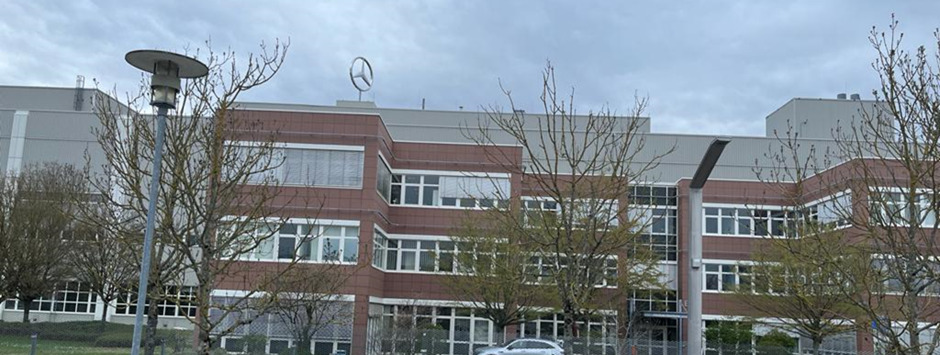
Savonia Article: Savonia IoT students visited Mercedes-Benz Car Factory – Experiences Gathered
#SavoniaUAS
Introduction:
Eight IoT students and three teachers from Savonia University of Applied Sciences visited the Mercedes-Benz car factory situated in Rasttat, Germany in March 2023. In this article, students have illustrated their learning experiences and how the visit was useful in terms of Internet of Things study points of view. In the first year of IoT studies, there is a course, named, Industrial Internet of Things and Digital Health Ecosystem.
In this course, students would have theoretical knowledge of smart manufacturing and the basic concepts of Industry 4.0 and digital twin technologies. We think that this visit made us possible to see the concepts of smart manufacturing, Industry 4.0, and digital twin technologies utilized in practice. Here are some of the learning experiences from the students:
Learning Experiences:
As an IoT student, visiting the Mercedes-Benz car factory in Rastatt, Germany was an incredible learning experience. The factory is known for its highly automated and technologically advanced production line that includes robotic systems, smart sensors, and digital twins. We visited the factory by bus, and the total area of the factory is approximately 1,473,000 square meters and the Production capacity is around 250,000 vehicles per year approx. (as of 31 December 2009).
It has been a long time since Henry Ford and his team at the Ford Motor Company introduced the first moving assembly line for the mass production of automobiles. The assembly lines nowadays became more modern and efficient, as we could see in the Mercedes-Benz factory. The supply of car parts is automatized, they come to the assembling line like a river, and get mixed with cars on the production line in perfect order – each part coming in its time. Each stage has its time for a worker to finish his part of assembling, and then the car moves to the next stage. The production efficiency of the factory allows it to produce a new car every minute. It is achieved with the use of modern technologies.
Observing the KUKA robots in action was one of the visit’s most thrilling technical highlights. These robots are made to do dangerous and repetitive operations like welding and painting on the manufacturing line. We had the opportunity to see how the robots were trained and interacted with the production system to guarantee that each automobile was put together precisely. These robots are designed to work alongside humans, helping to improve efficiency and precision.
Our tour guide told us that a new car was being produced every 80 seconds and that it took only 24 hours to make a car from scratch. Furthermore, she stated that the factory was producing more than 800 cars every day. I found these numbers very impressive, and it was great to see how technology can increase the productivity of a factory by huge margins.
The employment of digital twins in the production was equally remarkable. We discovered how the factory builds a virtual representation of each vehicle manufactured using digital twin technology. The factory may use this technology to assess and improve the production process, spot any problems or errors, and enhance the system to guarantee the best quality output. By automating many of the tasks involved in car manufacturing, the factory can produce cars at a much faster rate than would be possible with manual labor alone.
Any student studying IoT will benefit greatly from their trip to the Mercedes-Benz auto factory in Rastatt. It demonstrated the use of cutting-edge technology, automation, and digitalization to build a highly effective and efficient production process that results in high-quality automobiles. It illustrated how crucial IoT sensors and digital twins are to attaining this effectiveness and quality, as well as how these technologies are revolutionizing the industrial sector.
At the Mercedes-Benz Car Factory in Gaggenau, digital twins are used to create virtual prototypes of new cars, test different production scenarios, and identify potential issues before they occur in the real world. As an IoT student, the topic of “digital twin” was particularly interesting. We learned that the factory used virtual models to simulate various processes in the factory, with a goal to increase optimization and reduce the chances of errors.
In conclusion, visiting the factory was a brilliant and valuable experience. Combining production methods invented hundreds of years ago with modern technological solutions gives really impressive results. As IoT students we were inspired and motivated and having a picture of how the technologies can make complex processes simpler, we are eager to apply our knowledge in future practice.
Authors, Email, and Affiliation:
Md.Sajib M Pramanic Md.Sajib.Pramanic@edu.savonia.fi, IoT student, Savonia UAS
Bishwatma Khanal Bishwatma.Khanal@edu.savonia.fi, IoT student, Savonia UAS
Md. Z Khan Md.Khan@edu.savonia.fi, IoT student, Savonia UAS
Stanislav Kolosov Stanislav.Kolosov@edu.savonia.fi, IoT student, Savonia UAS
Shahil Sharma Shahil.Sharma@edu.savonia.fi, IoT student, Savonia UAS
Suubi Lubaale Suubi.Lubaale@edu.savonia.fi, IoT student, Savonia UAS
Asmita Thapa Magar Asmita.ThapaMagar@edu.savonia.fi, IoT student, Savonia UAS
Tahsina F Tasmi Tahsina.Tasmi@edu.savonia.fi, IoT student, Savonia UAS
Pasi Lepistö Pasi.Lepisto@savonia.fi, Senior Lecturer, Savonia UAS
Arto Toppinen Arto.Toppinen@savonia.fi, Principal Lecturer, Savonia UAS
Rajeev Kanth Rajeev.kanth@savonia.fi, Senior Lecturer, Savonia UAS